Manning Next Generation Main Battle Tank
By CPT Larry D. Tran
Article published on: October 1, 2023 in the Armor Fall 2023 Edition
Read Time: < 18 mins
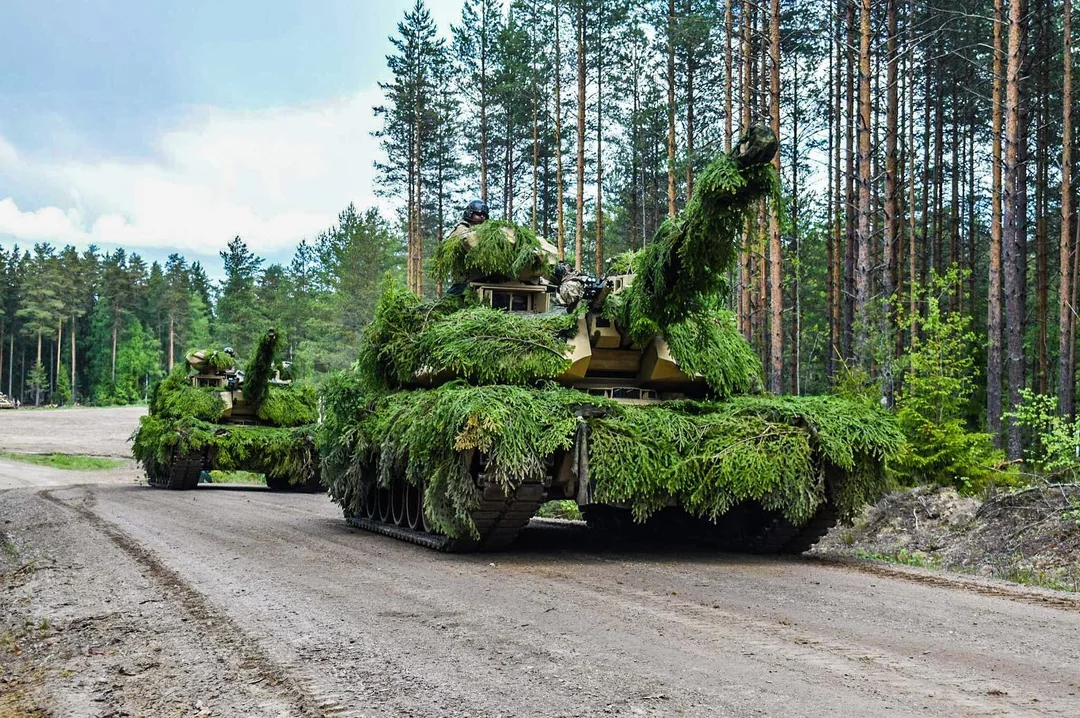
Figure 1. Tanks from Assault Company, 1st Battalion, 8th Cavalry Regiment conduct a Combined Arms Breach Full Dress Rehearsal at Vekaranjarvi, Finland prior to Operation Lock 2023. (Army photo by 1LT Raven Parker, battalion unit public affairs representative)
What is the ideal crew-size for the next U.S. main battle tank? The Armor community continues to train for large-scale combat operations (LSCO) with continued efforts in modernizing the armored fleet. Dan Heaton describes these modernization programs in his recent ARMOR article.1 Since Heaton’s article was published, the M2A4 Bradley Infantry Fighting vehicles and the Armored Multi-Purpose Vehicles (AMPVs) fielding are continuing to modernize ABCTs. The defense industry is competing within the Next Generation Main Battle Tank (NGMBT) program to determine the future MBT for the U.S. Army. The competitor for the NGMBT program, the Abrams X platform, was showcased at the Association of the U.S. Army Conference 2022.2 The Abrams X and many other tanks from our allies and adversaries are transitioning to three-person crews with an autoloader. Fifty-five percent of the newly announced MBT platforms are now three-person crews; this includes the Republic of Korea’s K2 Black Panther, the German Leopard 2, the Russian T14 Armata and the Chinese Type 99.
The U.S. Army’s MBT has not changed the four-person crew size since the transition from the M4 Sherman (five-person crews) to the M60 Patton platform in 1959. However, this has not stopped the Armor community’s continued analysis of the ideal crew size for the next MBT. The reinvigorated push to modernize the U.S. Army’s MBT and the arguments for the MBT’s ideal crew size have been echoed since the 1990’s. For example, CPT Mike Newell argued for a two-person crew in 1992. His argument was focused on reducing the overall silhouette of the tank allowing for the increase in armor.3 Robin Fletcher proposed a three-person crew in 1995 with the crew sitting abreast in the hull compartment, similar to the Abrams X.4 Years of failed modernization programs since 1994, such as the Future Combat System, coupled with the focus on Counterinsurgency Operations during the Global War on Terrorism, resulted in the M1 Abrams platforms continued use within the modern ABCTs supplemented with modernization packages to extend the Abram’s longevity.4 The incorporation of autoloaders and three-person crews in the U.S. Army’s NGMBT is likely to follow suit with the new MBT of our allies and adversaries.
Within this article, I assess how a reduction to three-person crews might impact the Armored community at the tactical level. Specifically, I consider how the personnel, organization, doctrine and training factors from the doctrine, organizations, training, materiel, leadership and education, personnel, and facilities (DOTMLPF) framework will be impacted. Within the personnel aspect, the reduction of manning within a tank company results in an expansion of time allocated for maintaining vehicles and a reduced capability to sustain continuous combat operations due to stressed fighter management. Organizationally, there is an opportunity for changes to the tank company’s structure allowing more NGMBTs to be fielded, while also mitigating the strains caused by a reduction of personnel. Lastly, training of armor crewman will shift to accommodate the additional duties taken on without a loader. By understanding these effects, the Armored community can communicate to industry what capabilities a three-person crew requires for LSCO and better prepare for these changes to ensure a more seamless transition to the NGMBT program.
Personnel
Utilizing the fiscal year 2023 modified table of organization and equipment (MTOE), the implementation of autoloaders and three-person crews reduces the tank company’s amount of military occupational specialty 19K1O Soldiers from 29 to 15. This 51-percent decrease in 19K1O manpower affects the tank company’s ability to conduct maintenance and continuous operations in a LSCO environment.
Maintenance is what gets a tank company into the fight and the reduction of one crew member extends the amount of time it takes to maintain and sustain a tank unit. Maintenance on the M1A2 SEPv3 tank includes the weekly preventive-maintenance checks and services (PMCS), semi-annual services and annual services. Technical Manual 9-2350-412-10-4 for the M1A2 SEPv3 prescribes the 51 items for the “before” PMCS, two items for the “during” PMCS, a road test, and then the 65 items “after” PMCS. Typically, a full crew of four can complete PMCS in 4-6 working hours, depending on experience levels of the Soldiers. Taking away one Soldier from the crew results in the other crew members assuming additional tasks required for the completion of the total work hours needed for weekly PMCS.
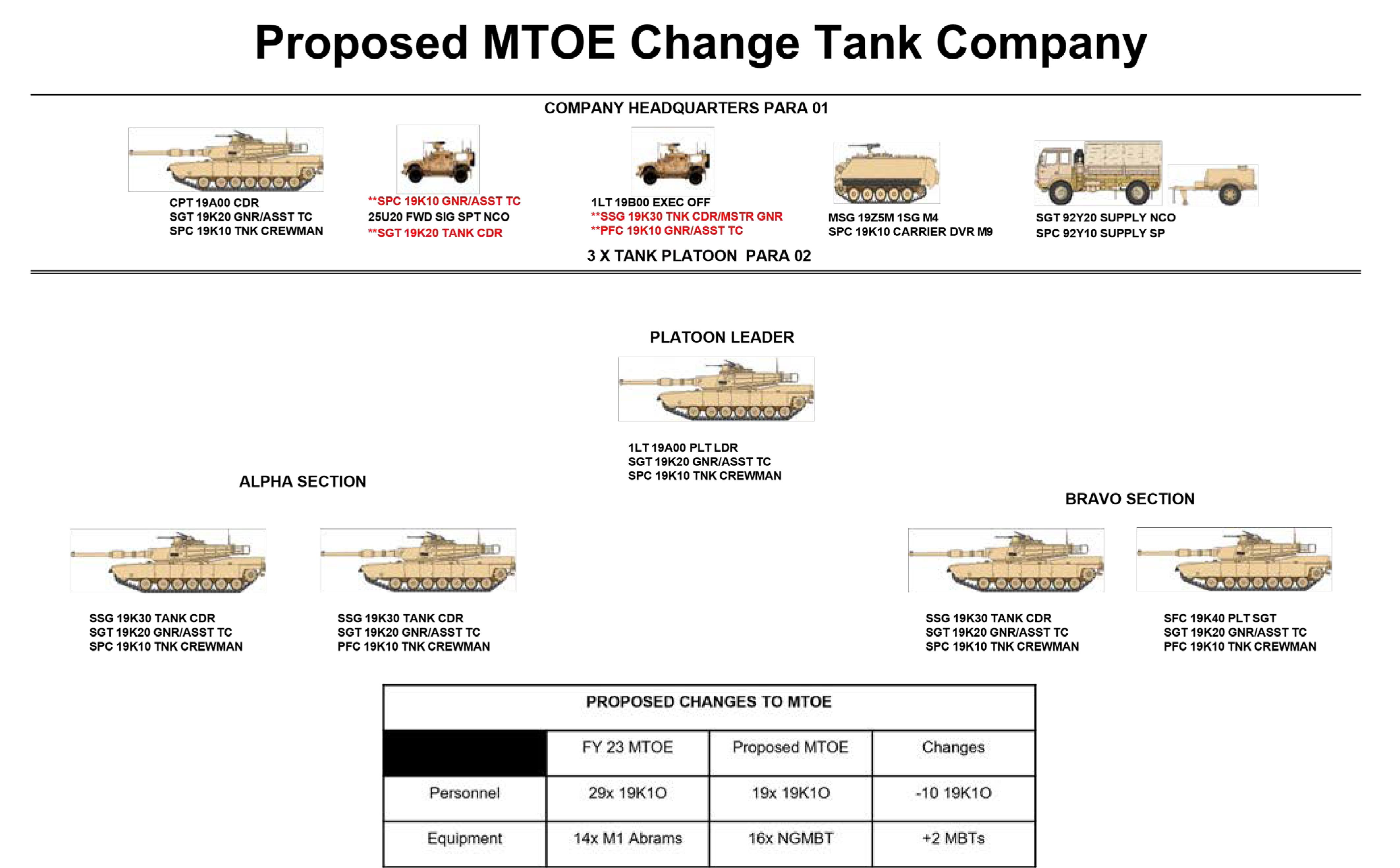
Table 1. Proposed MTOE change for tank company. (U.S. Army)
Services will also be impacted with a reduced crew. The M1 Abrams’s TM 9-2350-412-13&P shows that 275–300 working hours are required to complete semi-annual and annual services. Automations are unlikely to have a significant impact on reducing crew-level NGMBT service tasks. Many tasks still require crew members or mechanics to complete the task, such as replacing filters, replacing seals, cleaning the hull and turret compartment, etc. Battalion-level training management typically uses three weeks as a planning factor for tank companies to complete services with tank platoons rotating through hull services, turret services and ancillary services. If the NGMBT goes to three-person crews, then company and battalion leadership need to provide additional time for services given fewer hands to turn wrenches with a similar amount of work hours required.
The modernization to the M1A2 SEPv3 incorporated additional digital components that links multiple subsystems of the hull and turret together. The complexity of these added digital components become difficult to maintain at the operator and field maintenance level. More often that not, units have sought the assistance of field service representatives (FSRs) from General Dynamics Land System. The effects on maintenance due to personnel reduction is exacerbated due to the requirement for advance technical knowledge of the FSRs to diagnosis faults if the NGMBT’s modernization shares the same trends as the M1A2 SEPv3 with the addition of complex digital components. Units must allocate the time for the FSRs, which is an asset that is currently managed at the division level, before 10 level and 20 level maintenance can continue.
PMCS and other services for the NGMBT become an even more deliberate and longer process compared to the M1A2 SEPv3. Currently, commanders in armored brigade combat teams (ABCTs) attempt to protect “services and maintenance Monday’s” as much as possible; however, it is common for competing garrison requirements to spread the formation thin and a four-person crew on the Abrams quickly turns into two. Overall, the reduction to three-person crews on the NGMBT will result in ABCTs allocating more time that is solely dedicated to services within their training calendars. ABCTs will have to enforce that maintenance does not stop on Monday’s. Maintenance never stops and continues throughout the week. In addition to maintenance impacts, reducing the NGMBT’s crew size limits a tank company’s ability to sustain continual operations in a LSCO environment. In the Russo-Ukraine conflict, the Battle of Vuhledar extended for 21 days before the Ukraine ground forces destroyed the Russian 155th Naval Infantry Brigade.5 From my personal experience, I served as a tank platoon leader during exercise Combined Resolved VIII in 2017 at the Hohenfels Training Area (HTA) in Germany. Three out of the four tanks in my platoon had three-person crews, my crew being one of the three-person crews. Sustained combat operations for the 10 days of force-on-force operations put pressure on our platoon’s fighter management plan. With only a three-person crew, maintenance, sector sketches, camouflage, local security tasks, and rest became difficult to balance within the later battle periods.
I assess that sustained combat operations with a three-person tank crew results in faster degradation on tactical level units to accomplish their platoon battle tasks and company mission-essential tasks when compared to a four-person tank crew due to the increased stress on fighter management. Tank companies would require the same tasks out of their crews with less time to rest. Furthermore, when tank companies begin combat operations, the strain on the three crew members increases as they also absorb the loader’s former responsibilities. While loading the main gun is automated, the loader has additional responsibilities like assisting the tank commander with directing the driver and maintaining the communications equipment. A quantitative analysis of the increased workload on three-person crews versus four-person crews in a combat scenario was conducted showing that drivers in three-person crews had a higher overall workload and gunners had twice as many tasks.6
The Armor community continues to refine the understanding of what automations can provide within the NGMBT and how that effects fighter management in continuous LSCO operations at the tactical level. A deliberate assessment on sustained combat operations must be conducted with the NGMBT’s three-person crews. This assessment will come when the first NGMBT ABCT unit rotates through a CTC and provides the Armor community with an assessment of how long the three-person crews can sustain continuous operations. The assessment should also identify tasks and training that tank commanders must assume with the loss of a crew member.
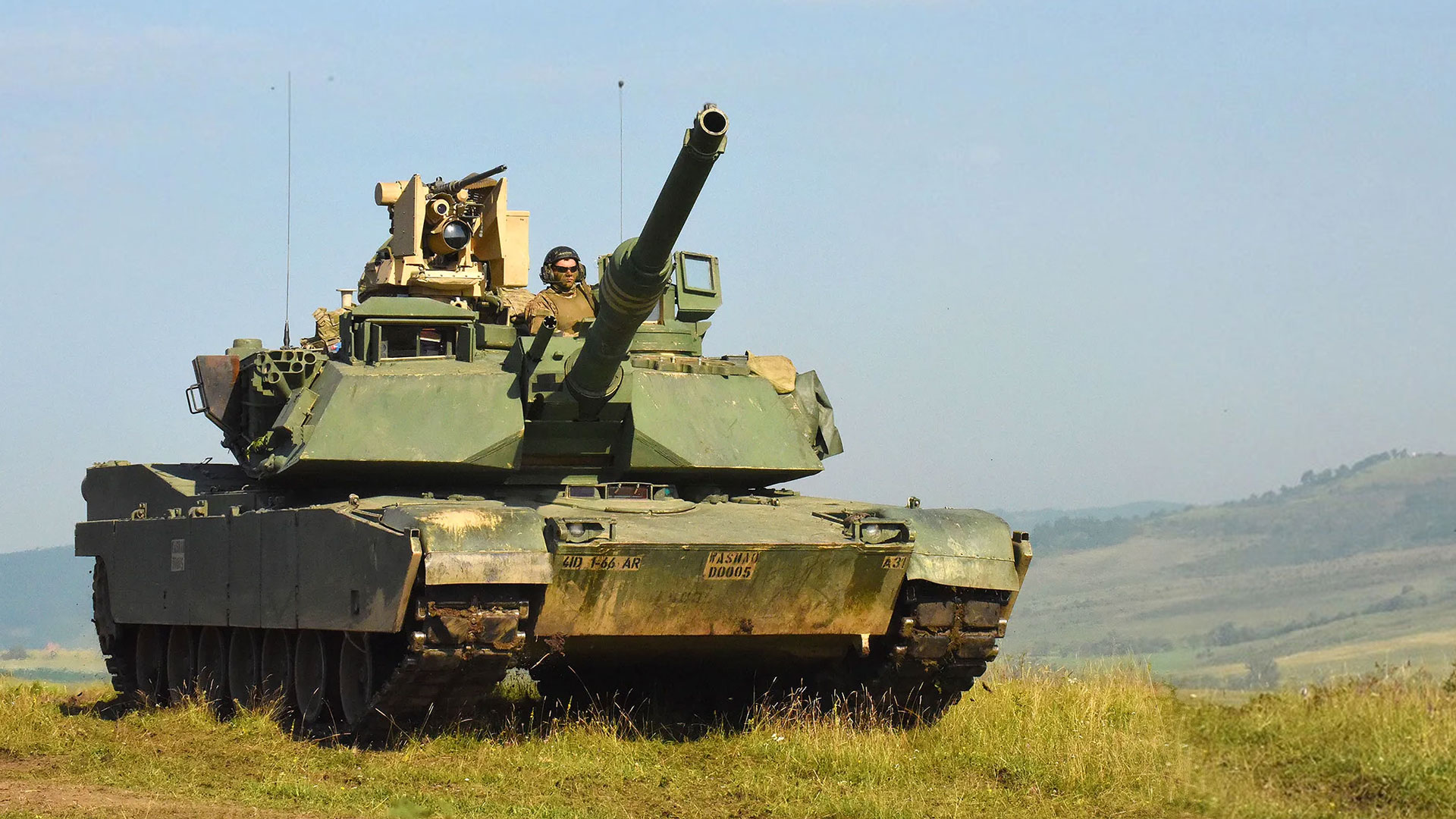
Figure 2. U.S. Army Soldiers of 1st Battalion, 66th Armored Regiment, 3rd Armored Brigade Combat Team, 4th Infantry Division, setup their M1 Abram Tanks during Saber Getica 17 in Romania, July 10, 2017. (U.S. Army photo by SPC Kelsey VanFleet)
Organization and doctrine
Retired COL Richard Kolasheski wrote about the organization and doctrine change that occurred in 1978 when the U.S. Army transitioned to the M1 Abrams platform, stating how the changes were “designed for better distribution and controls of combat power” as the U.S. Army tested a new battalion organization in preparation for the incorporation of the M1 Abrams platform from Jan. 17-23, 1977 during field training exercise Polar Gauntlet at HTA, Germany.7 Similarly, three-person crews in the NGMBT opens opportunities within the U.S. Armor Branch to reassess how we organize our forces, and it provides an opportunity to change our MTOE to expand the amount of combat power a tank company brings to the fight, while also mitigating the negative effects of less crew members per tank.
Company H, 2nd Squadron, 6th Cavalry Regiment at Fort Knox was tasked with the final testing and fielding of the M-1 program, which was finalized as the M1 Abrams MBT, in the Spring of 1980. Simultaneously, the U.S. Army enacted a major change in tank platoon organization and MTOE for armored battalions as they decreased the number of tanks per platoon from five M60 MBTs in one tank platoon to four M1 Abrams MBTs in one tank platoon. The “Smaller Crews” article by Alfred Bowen discusses that the driving factor for this organizational change was the “combined costs of procurement and operations.”8 This change of tank platoon organization was argued within the Armor community. Retired LTG Arthur Collins believed the M1 Abrams tank platoon should be reduced even further to three tanks.9 Retired MG Walter Ulmer supported the four M1 Abrams MBT tank platoon, citing that four tanks were the minimum number of fires and maneuver capabilities to allow a tank platoon to be effective. 10
I believe that another organization change will occur with the NGMBT, and there is potential to transition back to five tanks per tank platoon affecting the tactical-level echelons across the U.S. Army. Note that this assessment comes without the knowledge of the cost estimate of what the NGMBT will be compared to the M1 Abrams cost. Referencing the FY23 MTOE again, the current tank platoon has 16 Soldiers. The anticipated implementation of an autoloader and three-person crews allows tank platoons to field five NGMBTs per platoon with 15 Soldiers. The proper adjustment to the MTOE can be made to organize additional MOS 19K2O and 19K3O Soldiers to serve as the gunner and tank commander for the additional tank. Further changes could be made to alleviate the strains discussed within the personnel aspect of DOTMLPF. I argue that there is little tactical value added with the company executive officer in a tank. In a tactical environment, the executive officer is responsible for resourcing classes of supply for the company, facilitating operations at the company command post, overseeing maintenance, and supervising the company combat trains. The company executive officer can accomplish all these duties in one of the wheeled vehicles or the M113/AMPV within the headquarters section provided the right mission command and communication systems.
Overall, this reduction of one tank crew results in the new tank company MTOE of 16 NGMBT tanks per company, three platoons of five tanks and the company commander’s tank. Bigger picture, this is an increase of four tanks for a combined-arms battalion, increasing from 29 M1 Abrams tanks to 33 NGMBTs. Furthermore, this new MTOE would require 10 less 19K series Soldiers to operate all 16 NGMBT when compared to the current MTOE to operate all 14 M1 Abrams. Jump crews can be established within the headquarters sections to mitigate negative effects from the personnel loses. These jump crews can be aligned with platoons during garrison operations to assist with maintenance. In a tactical environment, these jump crews can rotate on tanks during security-rest cycles allowing the tank company some flexibility in its fighter management during continuous combat operations. My overall recommendation is that a minimum of two jump crews, four 19K Soldiers, are considered for any changes to the MTOE associated with changes from the NGMBT’s manning.
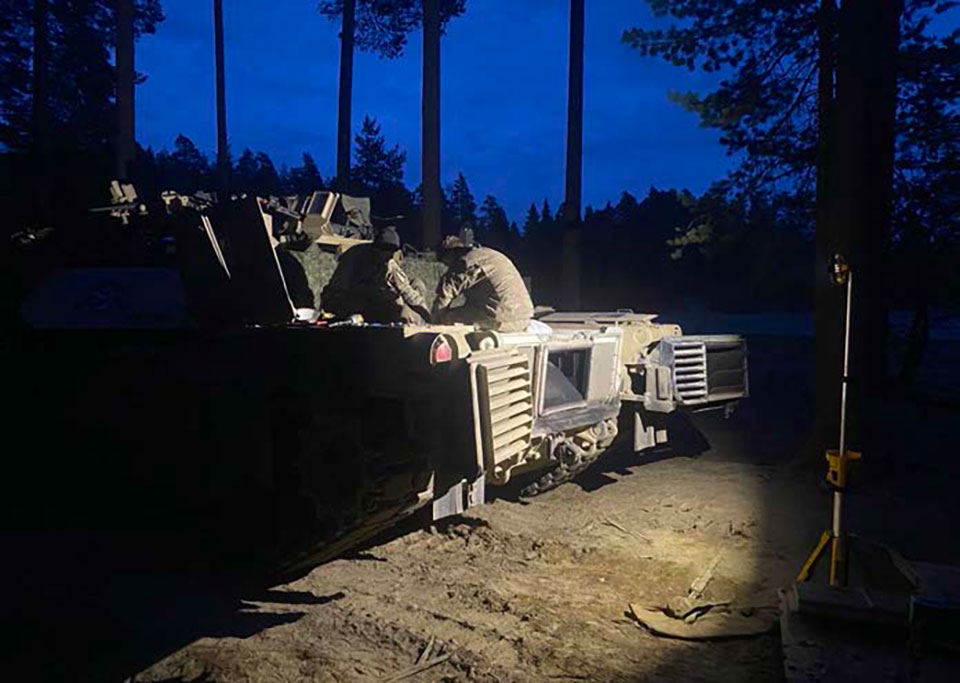
Figure 3. Mechanics from Assault Company, 1st Battalion, 8th Cavalry Regiment’s field maintenance team conduct battle damage assessment repair on an M1A2 SEPv3 Abrams tank during Operation Lock, May 2023. (Army photo by 1LT Raven Parker, battalion unit public affairs representative)
Doctrine changes may occur because of the organizational changes. A tank platoon’s durability and capabilities to maneuver are increased with an increase from four tanks to five tanks per platoon. Tank platoons are no longer rendered combat ineffective with the loss of a tank section. With the increase to five tanks per platoon, the loss of a tank section means that a tank platoon now has three tanks to maneuver. The remaining three tanks in the platoon can still conduct all the platoon battle tasks associated with a tank platoon with little degradation. An M1 Abrams tank platoon using current doctrine would be assessed as combat ineffective after the loss of a tank section and its ability to conduct platoon battle tasks in support of the company’s mission would be severely degraded.
Changes in current doctrine to accommodate five tanks per platoon can mirror old doctrine found in TC 17-15-11 Tank Crew Drills for M60 Series Main Battle Tank published in December 1977. The adjustment back to five tanks per platoons can be made quickly in aspects such as formation order of movement, standard direct fire control measures within formations and platoon battle drills. The most noticeable difference is that the platoon leader does not have to commit his/her tank into the fight with five tanks per platoon. The platoon leader can still have the two tank sections fight and remain uncommitted to fight to maintain command and control of the tank sections. The decision for the platoon leader’s tank to join the fight can be a deliberate action to mass fires on the decisive point of the operation. As a result of doctrine changes to how a tank platoon of five tanks fights, section sergeants retain enough fires and maneuver capability with their two NGMBTs to affect the enemy at the decisive point while not fully committing the entirety of their platoon.
In conclusion, organization, and doctrine changes with three-person crews on the NGMBT provide options to change the MTOE and allow for more combat power at the company and platoon level. These changes can also alleviate the strains that occur when reducing the crew size from four to three while also allowing companies to fully operate more tanks with less required Soldiers from the current MTOE.
Training
The last DOTMLPF factor considered in this article is training. The current tank crew member’s training progression begins at the loader position, then the crew member progresses to the driver position, then gunner, and then the final step if to become a tank commander. The mindset behind this progression is that a brand-new Soldier, fresh out of advanced individual training (AIT), can be placed in the turret first as a loader. That Soldier’s responsibility to maintain the radios can be taught easily, and loading a main gun round is already taught at AIT. They are in the turret with their gunner and tank commander who can provide hands on training in the turret and the new loader can see and hear all actions that goes on in the turret. This allows for better development of the Soldier’s technical and tactical skills on their MBT platform. That crew member transitions to the driver position knowing everything that the tank commander and loader does in the turret. The driver’s role is much more important because the driver’s action has implications that can lead to the survival of the crew. Referring to the Defense Technology’s article on tank crew’s workload, the driver has the second highest workload in both a three-person and four-person crew behind the tank commander. An experienced driver and tank commander who have a relationship working together can reduce the workload for both parties with communication that only results from multiple field training exercises together. I was lucky enough to have the same driver throughout the collective training period leading up to Combined Resolved VIII in 2017. The effective communication between my driver and myself allowed me to manage the movement of my tank, assist my gunner with scanning and engaging targets, and communicate with my platoon and company commander. That effective communication is not built without an experienced crew member in the driver’s position.
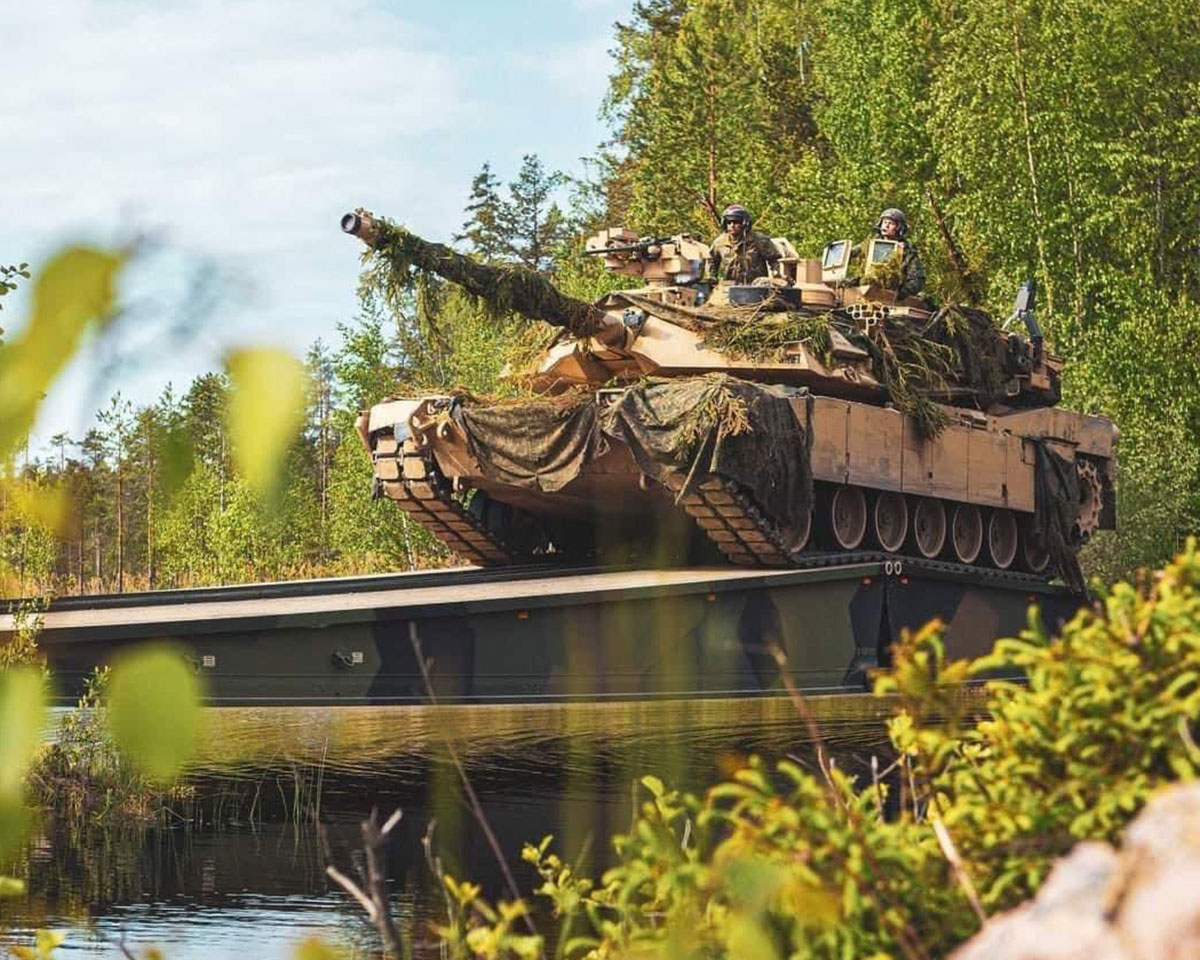
Figure 4. A tank from Assault Company, 1st Battalion, 8th Cavalry Regiment conducts a wet gap crossing during Operation Lock, May 2023. (Army photo by 1LT Raven Parker, battalion unit public affairs representative)
A three-person crew on the NGMBT changes this progression become a new Soldier would move immediately to the driver’s position and their actions can mean the difference between life and death of a crew. Training management and crew stability becomes even more important when the NGMBT is operated by three crew members. Retaining crew integrity, to include the driver, results in even more lethal crews who have effective communication while maneuvering. Realigning crews must be done at the onset of collective training and should be avoided once collective training starts. This mirrors what some of our NATO allies apply to their tank crews. In my experience, while I was conducting interoperability exercises with NATO allies in 2017 and 2023 in the U.S. European Command theater, it was not uncommon for me to talk to a NATO ally’s Leopard tank crew who have been together for more than two years.
One last note to highlight as a potential friction point for the NGMBT, training must be done on the autoloader and troubleshooting procedures to ensure crews know how to get their tank back into the fight when faced with issues with the autoloader. The M1128 Stryker Mobile Gun System (MGS) provides a reference for the use of autoloaders on U.S. Army platforms. The technical manual for the MGS platform cites multiple troubleshooting procedures that the crew needs to be proficient on. As prescribed in the TM, the crew can troubleshoot the autoloader based on the stage at which the autoloader failed to load the round. Otherwise, level 20 assessment by unit maintenance is required.
The main consideration at the tactical level for the implementation of an autoloader is the limitations and training requirements necessary for operation. Crew members require training so that they can continue to fight the tank when the autoloader becomes inoperable. Like three-person operations in an M1 Abrams platform, the gunner will have to transition to the loader role, and the tank commander assumes responsibility of identifying and engaging targets. The training required on the Abrams X is complicated since the crew will have to move from the hull into the turret The crew member will then stay in the turret to manually load rounds. This ability to continue to fight the tank with an inoperable autoloader is also dependent on the point in the loading process that the autoloader failed to load the round. The NGMBT may be combat ineffective if the capability to shoot is taken away due to an inoperable autoloader.
Conclusion
Overall, the implementation of three-person crews on the NGMBT has effects at the tactical level that needs to be considered as competition continues to develop between the NGMBT platforms.
The cost benefit analysis conducted on the personnel, organization, doctrine, and training from the DOTMLPF framework strives to highlight changes at the tank company level and below that I believe can shape the development of the NGMBT, while also setting conditions for the seamless integration of that platform once production begins.
Changes within personnel will affect how ABCTs throughout the U.S. Army expand the time necessary for weekly PMCS and services for the NGMBT. Additional stress to fighter management with a three-person crew reduces the length in which a tank company can sustain continuous combat operations. Organizational changes may manifest as MTOE changes increase the number of tanks per tank company and balance the shortcomings of personnel changes by adding additional jump crews.
Lastly, training changes must occur with the three-person crews to ensure new NGMBT drivers are prepared for the most workload demanding position within a three-person crew.
The Armor community needs to continue identifying tactical level effects as the NGMBT is determined to set conditions for the platform’s integration into the U.S. Army. The U.S. Army must replace the M1 Abrams before the next LSCO erupts to win on the battlefield against our adversaries who have already identified their new MBT for the long term.
Endnotes
1. Dan Heaton, “Combat Vehicles Developments to Propel the Army 2030 – and Beyond,” ARMOR, Fall 2022, https://www.dvidshub.net/publication/issues/66234.
2. Kyle Mizokami, “This Dramatic Upgrade to the M1 Abrams Could Help the Tank Soldier on Until the 2050s,” Popular Mechanics, Oct. 12, 2022, https://www.popularmechanics.com/military/weapons/a41575061/abramsx-tank-concept/.
3. CPT Mike Newell, “Survivability Is the Best Argument For a Two-Man Tank,” ARMOR, March-April 1992, https://www.benning.army.mil/armor/EArmor/content/issues/1992/MAY_JUN/ArmorMayJune1992web.pdf.
4. Robin Fletcher, “The Crewing and Configuration of the Future Main Battle Tank,” ARMOR, May-June 1995, https://www.benning.army.mil/Armor/eARMOR/content/issues/1995/MAY_JUN/ArmorMayJune1995web.pdf.
5. Andrew E. Kramer, “In an Epic Battle of Tanks, Russia Was Routed, Repeating Earlier Mistakes,” New York Times, March 1, 2023, https://www.nytimes.com/2023/03/01/world/europe/ukraine-russia-tanks.html.
6. Ming Mao, Fang Xie, Jian-jun Hu, Bo Su, “Analysis of workload of tank crew under conditions of informatization,” Defence Technology, Volume 10 Issue 1, March 1, 2014, https://www.sciencedirect.com/science/article/pii/S2214914713000597.
7. COL Richard Kolasheski, “A Battalion Commander’s View Division Restructuring,” ARMOR, November-December 1978, https://mcoecbamcoepwprd01.blob.core.usgovcloudapi.net/library/CavalryArmorJournal/1970s/1978Jan-Dec.pdf.
8. Alfred Bowen, “Smaller Crews,” ARMOR, November-December 1980, https://mcoecbamcoepwprd01.blob.core.usgovcloudapi.net/library/CavalryArmorJournal/1980s/1980Jan-Dec.pdf.
9. LTG Arthur Collins, Common Sense Training: A Working Philosophy For Leaders, Presidio Press, April 18, 1999.
10. MG Walter F. Ulmer Jr, “Book Review: Common Sense Training,” ARMOR, November-December 1979, https://mcoecbamcoepwprd01.blob.core.usgovcloudapi.net/library/CavalryArmorJournal/1970s/1979Jan-Dec.pdf.
Author
CPT Larry D. Tran, commander, Company A, 1st Battalion, 8th Cavalry Regiment, 2nd Armored Brigade Combat Team (ABCT), 1st Cavalry Division, Fort Cavazos, TX. His previous assignments include assistant S-3, 4th Squadron, 9th Cavalry Regiment, 2nd ABCT; commander, Headquarters and Headquarters Company (HHC), Task Force Sinai, Sharm el-Sheikh, Egypt; executive officer, HHC, 1st Battalion, 66th Armor Regiment, 3rd ABCT, 4th Infantry Division; and tank platoon leader, Company A, 1st 66th Armor Regiment. CPT Tran’s military schools include the Cavalry Leaders Course; Maneuver Captain’s Career Course; Army Reconnaissance Course; Armor Basic Officer Leaders Course. All schools were at Fort Moore, GA. CPT Train has a bachelor’s of science degree in human biology from the University of Texas at Austin. His awards include the Meritorious Service Medal.